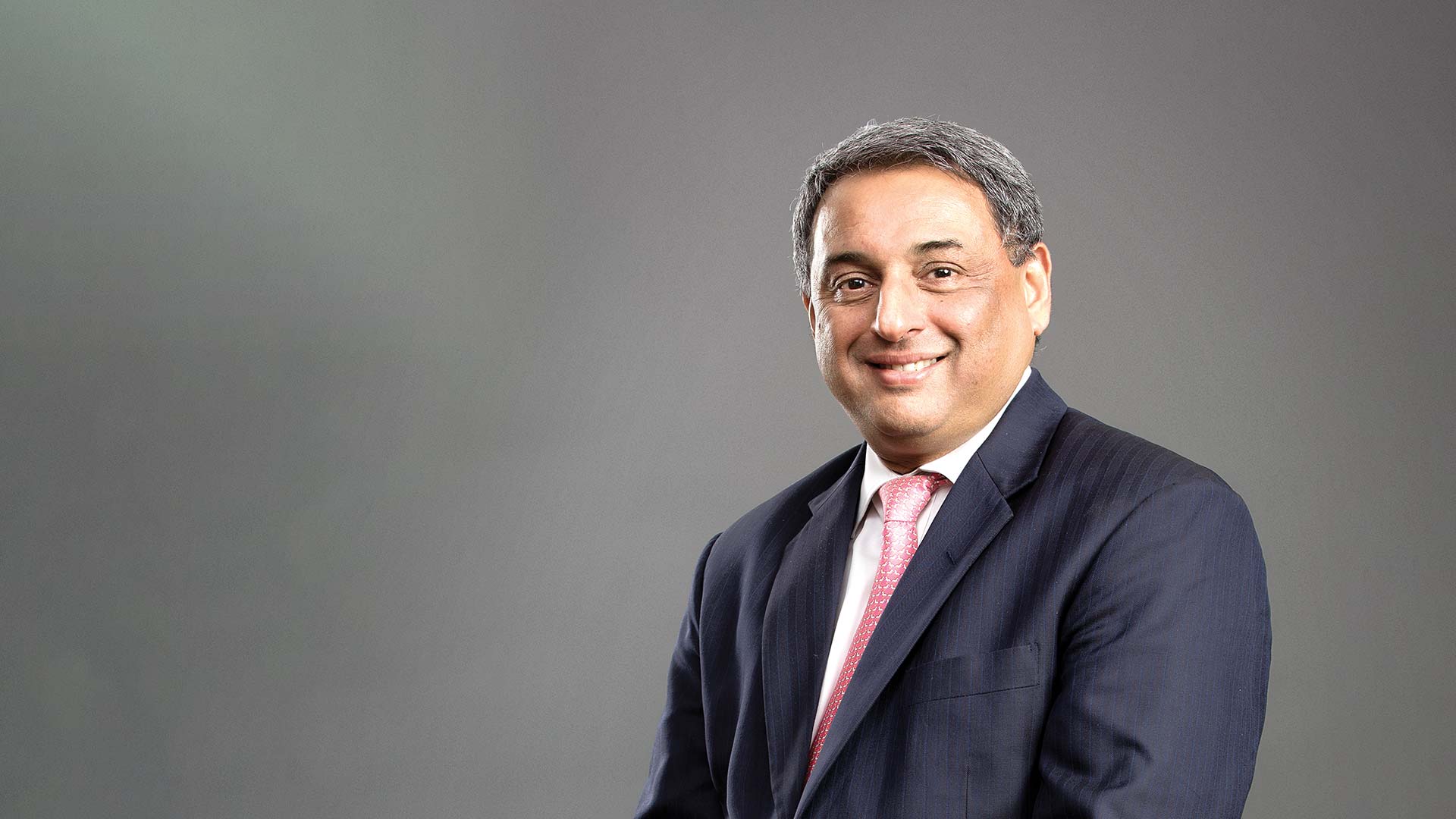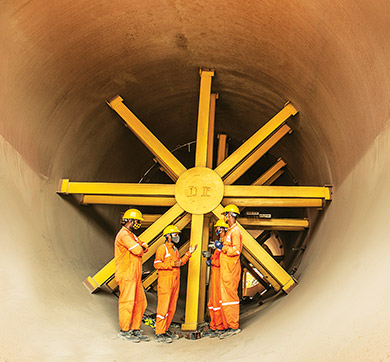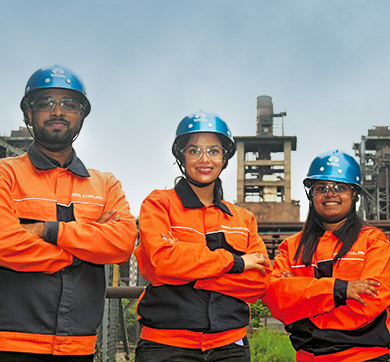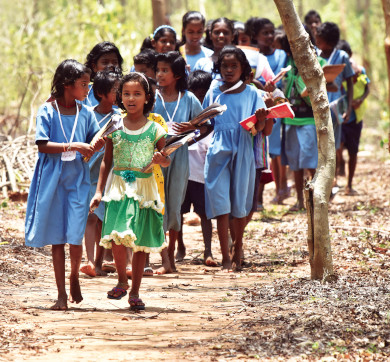April 2022 | 1364 words | 5-minute read
From joining Tata Steel as a management trainee in 1988 to leading the company three decades later, TV Narendran has had an illustrious journey with the steel behemoth.
In this interview, he talks about what set Tata Steel apart in the past, how it continues to set benchmarks in the present, and his plans to make it a future-ready organisation.
Tata Steel Ltd (Tata Steel) is expanding its presence in India. Is there a conscious shift to focus on the Indian market?
A few years back, as an organisation, we decided to be structurally, culturally and financially future ready. Back then, we had been struggling — some assets were making money, some weren’t. Besides, steel is a cyclical business and new regulations in the mining space and multiple other factors made us realise the need to prepare for a future that is going to be tougher.
"When we say ‘#WeAlsoMakeTomorrow’, it’s more to create a bridge between Tata Steel of the past and the future-focused company of today."
When group Chairman, N Chandrasekaran, asked group companies to simplify, synergise and scale, it got us thinking. We had many subsidiaries in India and Europe, so simplifying was necessary. Synergies could be achieved not just across Tata Steel, but also within the group. We’ve always been very strong in India. In fact, the strength of our India business often goes unnoticed due to the losses incurred in the past in Europe, more specifically in the UK. We therefore decided to strengthen the European business by looking at opportunities to merge or divest or improve performance but grow the India business and grow it fast.
Within this framework, Tata Steel has focused on both organic and inorganic growth in India.
What has the India growth story been so far?
Our India business today accounts for 60-65% of revenues, and we are confident that this will continue to grow. Inorganic growth in India has supplemented organic growth. In the last few years, our steel production has grown from 10 million tonnes to 20 million tonnes, and we want to take it to 40 million tonnes in the next 10 years.
Towards this, we are building capabilities and taking steps to tackle vulnerabilities caused by business cyclicality. For instance, we have moved into downstream steel business, developed service and solutions business, invested in new materials such as graphene, advanced ceramics and fibre reinforced polymers.
We have simplified significantly, scaled up significantly and are driving synergies. Over the last few years, we’ve focused on the way we allocate our capital and generate cash to run a tight business.

Tata Steel is among the top nation builders. What does this responsibility entail?
The Tata group and Tata Steel have been nation builders for more than a century. Today, we are present in Southeast Asia and Europe and need to figure out how to play a decisive role in their ecosystems. What may be an issue in India might not be an issue in the UK, Europe or Thailand, so nation-building can have a contextual connotation, depending on the geography in which we are operating. Nonetheless, whatever we do must tie-in with the local context and culture. For instance, in the Netherlands, we associated ourselves with the 100-year-old chess tournament, which is a legacy there. So yes, while the responsibility is huge, so are the opportunities.
From making steel to making tomorrow, tell us how the brand tagline has stayed true to the company agenda and strategy.
Our new tagline, ‘#WeAlsoMakeTomorrow’, was created for two reasons: we wanted to leverage the emotional connect that people felt for the previous tagline, ‘We also make steel’, and, at the same time, talk about the future. Honestly, when you are a 100-year-old company, the tendency is to keep talking about your past. While we are proud of our past, can we, as industry pioneers, create a future that coming generations would be proud of. When we say ‘#WeAlsoMakeTomorrow’, it’s more to create a bridge between Tata Steel of the past and the future-focused company of today.
"Our India business today accounts for 60-65% of revenues, and we are confident that this will continue to grow."
Tata Steel’s sustainability measures have always gone beyond compliance. How do you approach and marry business and sustainability?
Climate change is important not just for Tata Steel but for the entire steel industry. The steel industry is one of the biggest emitters of carbon and accounts for 8% of all carbon emissions in the world. It’s an existential issue; as an industry leader, it’s our responsibility to lead the way in this transition.
In Europe expectations of the government, customers and communities are changing rapidly. They are readying the infrastructure and policy framework for a greener tomorrow. This has accelerated our journey in Europe, and the learning has helped make the transition in India easier and quicker.
"We created an innovation team that worked on customer- and market-led innovations and technology; and encouraged the leadership team to focus on it."
When we embarked on this journey 5 years ago, people didn’t grasp the subject fully. We trained our board members, directors, leadership team, and senior executives, as well as the top union leaders through a training programme organised by Cambridge Institute of Sustainability.
We also onboarded Sanjiv Paul — one of our senior-most operating leaders — as VP Safety, Health and Sustainability, to emphasise the function’s significance. Over the years, Sanjiv and his team have done a wonderful job, making sustainability a part of the organisational ethos. We have taken up several green projects and are collaborating with start-ups, doing innovative work in this area.
Tata Steel has had a robust innovation culture. As the organisation head, how do you drive this culture?
If you look back, Tata Steel hardly featured on any innovation platform. This was worrisome because the company was doing some innovative work, but, somehow, it wasn’t getting showcased properly. We also needed to do more than what we were doing then.
We created an innovation team that worked on customer- and market-led innovations and technology; and encouraged the leadership team to focus on it. Tata InnoVista — the ‘One Tata’ platform for recognising and celebrating innovations of group companies — proved to be the perfect platform to test ourselves. I’m happy to state, in the last 3 years, 30% of Tata InnoVista awards have been won by Tata Steel and Tata Steel Europe.
However, these are just milestones. We are still a long way from being called a truly innovative company. It’s work in progress but if you celebrate this journey visibly, then more people are motivated to do good work, thereby creating a culture of continuous improvement and breakthrough innovations.
Tata Steel has many industry-firsts but none as remarkable as its inclusive HR policies. How do you see the journey to inclusivity expand?
Tata Steel has been a pioneer in employee welfare policies. We were the first to implement several policies more than a century ago, even before they became law. This signifies the progressive mindset of our leaders all along. But the question was what pioneering work are we doing today? The 8-hour work week, medical facilities and maternity leave, all started in the 1920s. A century later, if this is the only pioneering HR work we can talk about, then we are missing something and this got us thinking.
I spoke to the HR team. Atrayee Sanyal, the then chief diversity officer, took on the diversity and inclusion agenda with passion; our work in LGBTQ inclusion has been exemplary. The world is changing; along with it, expectations of current and potential employees are also changing. To be a pioneer, you must be a leader and look for new things to do, and then build your own momentum — that’s what Tata Steel is doing.
As someone who joined Tata Steel as a graduate to leading the company three decades later, can you state what has and will continue to make Tata Steel relevant to future generations.
I joined Tata Steel as a management trainee in 1988; obviously, I didn’t think 33 years later, I would be at the helm. In my 32 years here, I have had the opportunity to work in 3 countries, at multiple locations, in varied functions with the responsibility to do new things. I have had the freedom to chart my own growth path.
In many ways, Tata Steel gives you flexibility. We invest in talent and can make leaders out of pretty much everyone who joins us if they choose to go on the journey. We have had people who joined the shop floor and have reached the highest levels in the organisation. This is because the company invests in employees who focus on self-enhancement. It’s thus hardly surprising that, like me, many employees are comfortable spending their whole career in Tata Steel. We should strive to make Tata Steel a future-ready mining and metals behemoth.
—Sanghamitra Bhowmik








